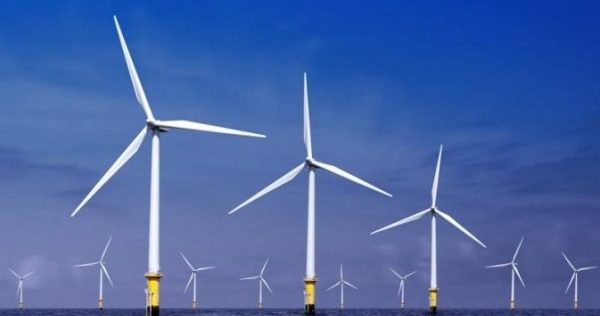The American Wind Energy Association (AWEA) applauded the Massachusetts state legislature which just passed a new law that will dramatically expand procurement of renewable energy in the state.
“Massachusetts lawmakers have taken transformative action to make the state’s energy supply cleaner and more reliable,” said Andrew Gohn, Eastern Region Policy Director, AWEA. “We thank Sen. Ben Downing, and House Telecommunications, Utilities and Energy Chairman, Thomas Golden for championing this bill and thank Gov. Baker for his leadership in this effort. We encourage the Governor to sign it into law without delay. This is industry-making legislation for offshore wind power in the U.S. that will also be a boon for consumers by driving thousands of additional megawatts of renewable energy through healthy competition between renewable energy sources like land-based wind.”
The new bill H. 4568 tasks state utilities with procuring 1,600 megawatts (MW) of offshore wind power capacity through 15 to 20 year contracts by 2027 and an additional 9.45 million megawatt hours (MWh) of annual electricity generation by new Class 1 renewable energy sources and hydropower by 2023.
Offshore wind projects solicited under the new requirement have a minimum size of 400 MW, which is twice the capacity of the average land-based wind farm installed in the U.S. last year. Using the world’s largest wind turbines, offshore wind farms are able to harness steady winds close to major population centers on America’s coasts.
“With projects of the scale called for by this new legislation, Massachusetts is creating real momentum for offshore wind,” said Nancy Sopko, Manager, Advocacy and Federal Legislative Affairs, AWEA. “Industry follows policy, and Massachusetts as a first-mover has positioned itself as the cradle of an entirely new domestic supply chain that could revitalize East Coast port cities, supporting offshore wind development and potentially thousands of jobs.”
Along with offshore wind, AWEA estimates that the 9.45 million MWh of additional renewable energy procurement could foster approximately 1,700 MW of new land-based wind capacity based on historical procurement rates. An important provision added during legislative conference enables Class 1 renewables, which by definition includes land-based wind and solar projects, to compete openly with hydropower. The cost of land-based wind has fallen by two-thirds in six years and it is among the least-cost options for generating electricity in many parts of the country.
Source : AWEA




























































